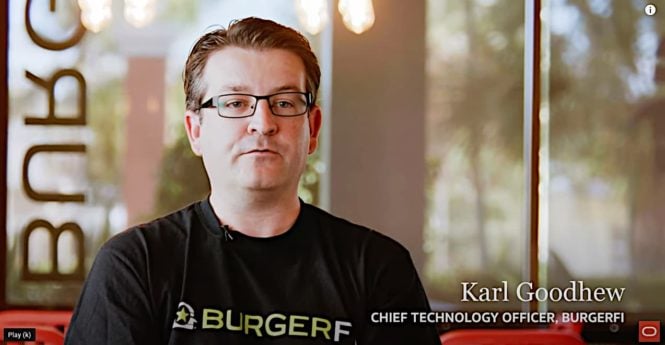
Self-Order ROI Case Study BurgerFI
Be sure and read our latest feature on ROI, Kiosks and Self-Order as demonstrated by BurgerFi. Other companies involved include GRUBBR, Samsung and Oracle.
Excerpt:
Finding, sustaining and ultimately proving kiosk ROI can be tricky. Karl Goodhew, the chief technology officer at QSR BurgerFi, has come up with a very repeatable method of bringing home the kiosk ROI.
BurgerFi, with 124 U.S. locations spread across 20 states, uses kiosks for faster ordering. The science comes from location, store selection and timing.
The first step, Goodhew argued, is to have a very explicit performance goal in mind before any kiosks are installed.
“We went in with a defined goal with the kiosks. Changing the technology too many times is bad. Micromanaging the experience kills your ROI,” Goodhew said. “You have to let it play out. It costs money every time you change. Give it three months, at least. Then you have a decision: Kill it, keep it or grow it.”
Even though Goodhew targets three months for a kiosk trial, he said that he “wouldn’t change the vendor for at least a year, unless it’s really identifiable that it’s a vendor problem. Some (other merchants) test kiosks side by side, using multiple vendors. That is simply not a good use of everyone’s time. The issue is that you have to spend twice the amount of time, doing twice the integration. Your loyalty, your payments, your menu–all of that has to be integrated twice.”
A better approach is to add time and talent to the evaluation process, selecting your top vendor and then only using one vendor’s kiosks. “Do more of your work upfront. Don’t do a bakeoff,” he said.
More Posts:
- Restaurant Kiosks – GRUBBRR Rolling out Samsung Kiosk – Case Study Data(Opens in a new browser tab)
- Does ROI Matter? Napkins, Excel & the Spruce Goose(Opens in a new browser tab)
- Whitepaper – Determining ROI for Merchandising Displays and Interactive Kiosks(Opens in a new browser tab)
- Retail Kiosks and their ROI(Opens in a new browser tab)